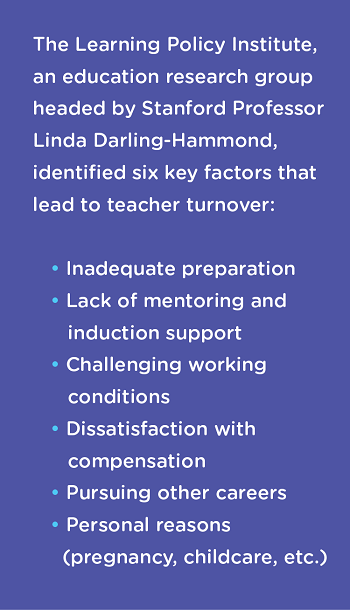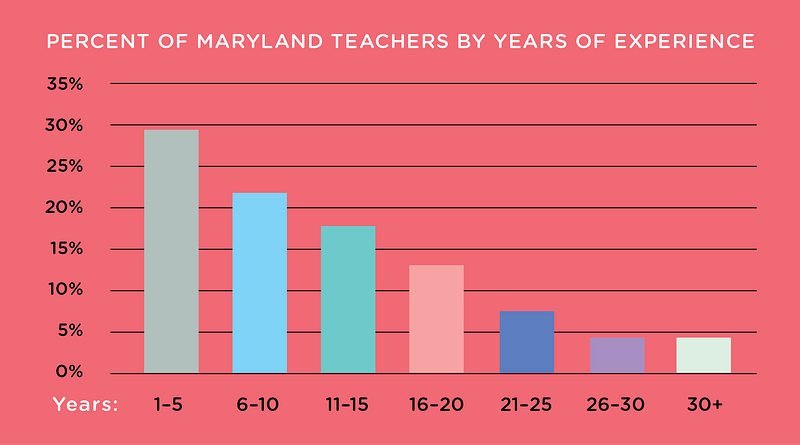They Say You’ll Be Gone after Three Years. Don’t Go Yet.
We need you.
Not only do new teachers deserve more and better support so they can succeed and thrive in the classroom, but students benefit from teacher stability, experience, and quality — which often go hand-in-hand.
It’s costly situation. Richard Ingersoll, a University of Pennsylvania professor and leading researcher on teacher turnover, estimates that this rate of turnover costs school districts nationwide $2.2 billion annually. The estimated bill in Maryland? Somewhere between $20 and $45 million per year.

“The biggest set of reasons [teachers leave] has to do with the quality and caliber of the job. It’s the amount of support,” Ingersoll said in a 2015 PBS interview. “It’s the amount of student discipline and behavioral problems in the building. It’s how much say teachers have in the decisions in the building that affect their jobs. Do they have input and voice?”
Right now in Maryland, the largest group of teachers are in those tenuous first five years of their practice. While it’s part of a huge generational change taking place across the U.S., Maryland is one of the states on the leading edge of the shift. According to the Learning Policy Institute, Maryland had the eighth highest percent of first and second year teachers in the country in 2014.

“There’s nothing wrong with some people quitting — that happens in all occupations. And there’s nothing wrong with getting some fresh blood in,” Ingersoll said in 2013. “But the increasing instability of teachers is certainly a concern.”
Long hours, lack of respect, and lack of autonomy are also frequently cited by teachers who decide to leave the profession.
While Gallup research has found that teachers are excited about the impor- tance of their work — they are more likely than other professions to regard their job as a “calling” rather than a career — a 2012 Gallup survey found that among employees in 12 different occupational categories, teachers were least likely to agree with the statement, “At work, my opinions seem to count.” Combined with often subpar support for new teachers and the so-called “teacher pay penalty,” it’s no surprise that teacher turnover has reached such alarming heights.
In fact, the teacher pay penalty is bigger than ever, according to a 2016 Economic Policy Institute (EPI) report: “In 2015, public school teachers’ week- ly wages were 17% lower than those of comparable workers — compared with just 1.8% lower in 1994.” Even after factoring in school employees’ pension and health care benefits, teachers’ total compensation still fell below that of other college- prepared professionals by 11.1%.
Source: MSDE, “Presentation to the Maryland State Board of Education: Descriptive Analysis of School Year 2014–15 Teacher and Principal Effectiveness Ratings,” October 27, 2015 | MSDE, “Professional Staff by Type of Degree and Years of Experience

